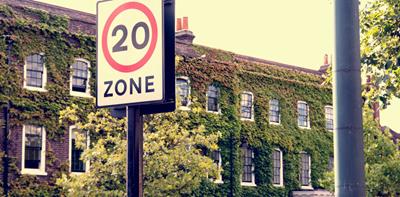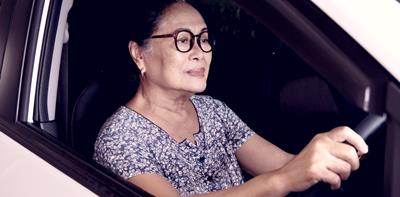
During the school run, a lot of traffic and children are in the same place at the same time, which causes understandable safety concerns. Here’s how both adults and kids alike can navigate the school run safely.
The beginning of term is a great time to give your children a road-safety refresher. And if they’re starting school for the first time, it’s even more important to give them the lowdown on how to stay safe around traffic.
It’s also a good time to brush up on driver etiquette as a parent or guardian. So here are some useful pointers to bear in mind for a safe school run.
Growing traffic
While children walking to school used to be the norm, many parents and guardians now drive children to school. This means a lot of traffic trying to get as close as possible to the same place at the same time.
As such, road safety is an issue. According to road-safety charity RoSPA, around 1,200 children are injured in traffic-related collisions within 500 metres of a school every month[1].
In addition, a high volume of vehicles – many of which may be idling – can lead to poor air quality.
School run etiquette for adults
In order to help reduce the chaos of the school run – and contribute to the wellbeing of your children and their fellow pupils – there are a few simple steps you can take.
Avoid driving if you can
The best way to help ease traffic congestion and emissions around schools is not to drive. Of course, for many this will be easier said than done, and sometimes it’s unavoidable. But if it’s possible to arrange an alternative, then it’s likely to be to everyone’s benefit.
In addition to walking or cycling to school, you could look into ‘walking bus’ schemes. This is where at least two parents or teachers will accompany a group of children walking to school. The adults wear hi-vis clothing, and take their positions at the front and back of the ‘bus’.
Park strategically
If you have to drive, it’s worth asking yourself if you need to park right next to the school. Could you help ease congestion by parking a few streets away? A bit of shrewd parking may also mean you can get in and out quicker, and not get caught up in the throng.
If you know anybody who lives near the school, they may let you park at their home or driveway for a few minutes while you pick up or drop off the kids. Or you could find somebody by checking local community groups on Facebook, Next Door and the like.
Share lifts
If you live near parents who also drive their kids to school, you could arrange carpooling and take it in turns to brave the school run.
To help organise – and so the kids know who’s picking them up and dropping them off – you could use a shared calendar app such as TimeTree.
Respect the speed limit
While the speed limit is 30mph in most urban areas, local authorities often apply 20mph speed limits to areas with lots of vulnerable road users.
Schools in particular are often surrounded by 20mph limits, but it’s worth remembering that this shouldn’t be treated as a target; the slower you’re driving, the quicker you’ll be able to react if a child runs out onto the road.
Avoid idling
Leaving the engine running while stationary – otherwise known as idling – is best avoided, as exhaust fumes contribute to air pollution. In particular, nitrogen dioxide, carbon monoxide and hydrocarbon emissions are linked to asthma and other lung diseases. As such, it’s best to switch the engine off when waiting for children – especially if you have a diesel vehicle.
Although it’s possible for some authorities in England to issue £20 fixed penalty notices for idling[2], RAC research in 2019 still found that 26% of idlers are spotted outside schools.
Road safety for kids
It’s never too early to start teaching your children about road safety. Even young children experience the road as passengers in cars, for instance, and learn from this environment earlier than you may think.
When they do start going to school, they’ll need a lot of hand-holding to begin with – both literally and figuratively.
The pedestrian charity Living Streets – which organises Walk To School Month – encourages that children learn certain essential road-safety skills:
Cross the road safely at the correct crossing points
There are likely to be several different crossing points on the journey, so navigate the journey with them before they first do it themselves. To set a good example, always use these crossing points when walking together.
Take extra care when crossing the road
In particular, primary-aged children aren’t very good at judging speed, so should learn how to not take risks. Be sure to teach them the Green Cross Code.
Navigate using landmarks
Knowing the key landmarks on a journey will give them confidence when they start making the journey to school by themselves, or with friends.
Identify problems on the journey to school
If, for example, road signs are broken, crossings aren’t working properly or a pavement is damaged, encourage your children to tell you. You can then check these yourself, and if you feel it’s worth flagging, tell your local council.
Cross the road safely at the school gates
As these may be congested just before school begins and after it finishes, it’s worth taking extra steps to know how to navigate the entrance properly. You could consider asking the school about setting up a ‘car free zone’ right at the entrance.
Learn to walk on their own
Ultimately, when they’re old enough, they’ll be able to walk to school independently. Like with so many skills, they’ll gain confidence by applying the road safety skills they’ve learnt without any further hand-holding.
For more suggestions on how to prepare your children for approaching the road safely, RoSPA has a downloadable Guide for Parents.
Go to Solved to read more about driving, the rules of the road and road safety.
[1] https://www.rospa.com/media/documents/road-safety/factsheets/home-to-school-travel-guide.pdf
[2] https://www.legislation.gov.uk/uksi/2002/1808/contents/made


